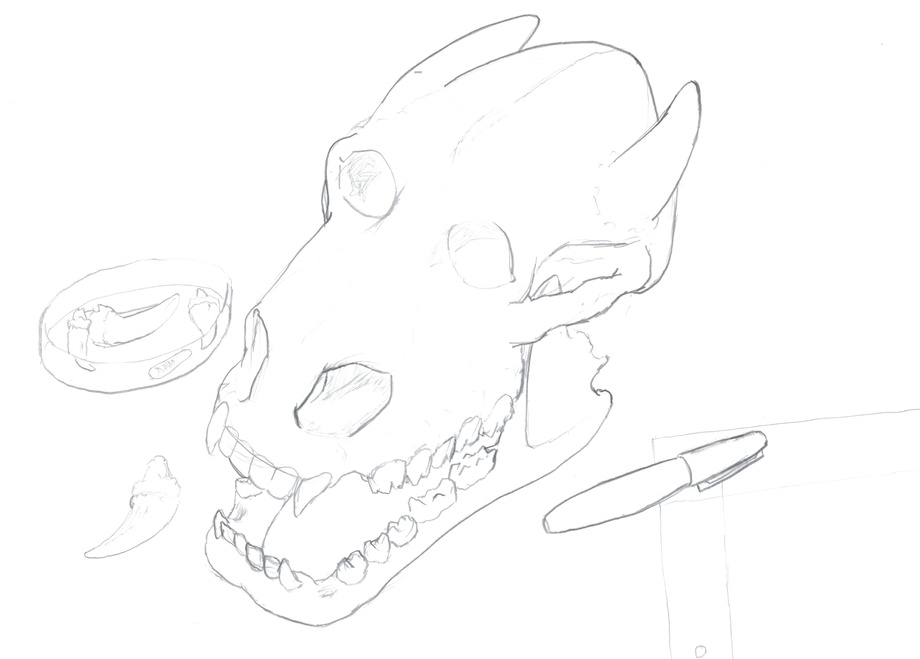Leccathu Furvicael over on FA has done a couple of brilliant commissions where she designed folks' dragon characters' skulls. I figured I'd try the same, wondering what a domestic dragon's skull might look like, and a lapdragon in particular - a couple of their modifications have implications for skull morphology.
At around seven years after the first dragons were made, none have yet died of natural causes, and few from violence or accident. Most of them didn't leave an intact skull to be studied, so this is probably a very high-resolution reproduction based on CT scan data and having the fully comprehensible genome to refer to.
When I was drawing the jaw, I realized fairly far into it that it wouldn't line up.
Then I remembered that in undergraduate anatomy, everything disarticulated slightly as soon as you set it down, no matter how carefully you did. So this is now a lab, with one of those distinctive black plastic benches, proof against abuse, melting, and particularly against concentrated cleaning solvents.
I'll be the first to admit I freely mixed mammalian and reptilian traits in this skull, the better to represent dragons' ad-hoc, engineered nature. I know I see some baboon and canine in there (though there's only small slips of saggital crest; canines don't have to wrap their jaw musculature around horns!) along with a saurian nose.
Features to note:
• There's an organic 2.4 ghz half-wave dipole antenna dictating the size of the horn core. Dragons' emotional telepathy shares a band with consumer-grade wi-fi, and work is quickly proceeding on algorithms to teach computers to speak the fuzzy, analog 'language' involved. Conversely, dragons can sort of propriocept their way to any wi-fi device they can 'hear'.
• Years of sleeping on either side have put a faintly detectable groove in his skull where the RFID implant sits.
• The dental formula in this revision of the dragon genome is identical on top and bottom, at 2/2/3/2. This refers to the number of each type of tooth, counting outwards from the midsaggital plane (the middle outwards). In order, that would be two incisors, two canines, three bicuspids or premolars, and two molars. The design was intended for opportunistic omnivorism something like bears or raccoons when living off the land, without causing problems with a human diet.
• I'll probably go back for a second design pass, now that I can compare the complete skull to reference photos, and not just compare individual features. I feel like I could do better than this.
• If you recognized the pen as a Lamy 2000 fountain pen, you should be impressed with yourself.
Details
Published:
10 years, 7 months ago
08 Apr 2015 12:22 CEST
Initial: f8cc28e7ec8bcc352d283230f0177fef
Full Size: c10fd8509dcc8c7c9bb35f661ed847c2
Large: 4b1b0894cad6b62b22873ef830f017cc
Small: 0bff321d42acaabc8c1c7c6cbdf5a520
Stats
25 views
1 favorite
0 comments
